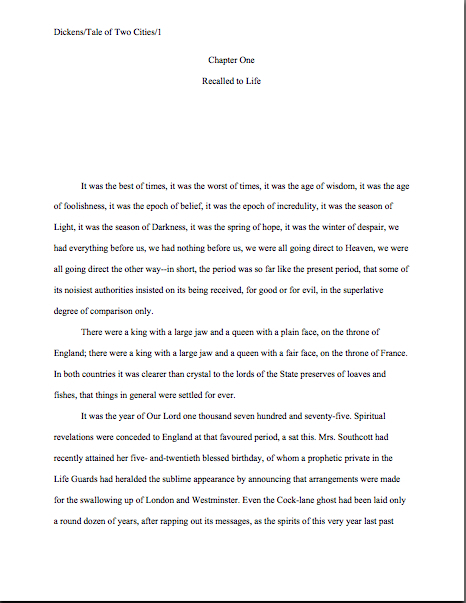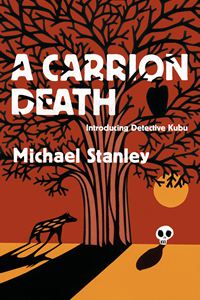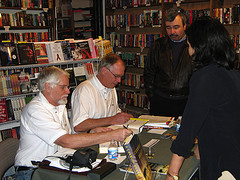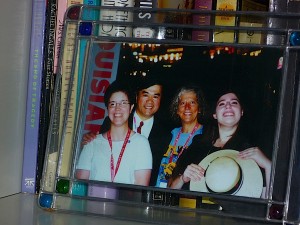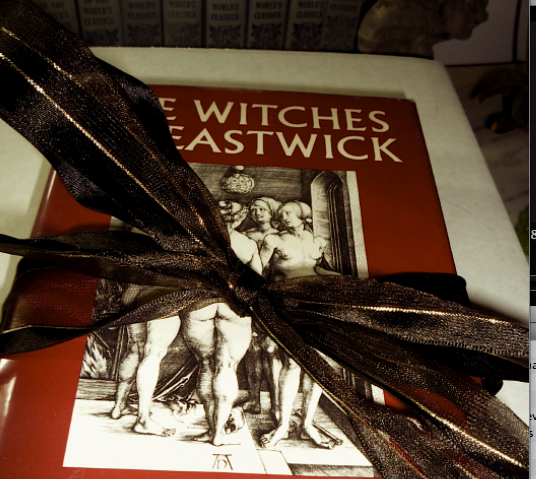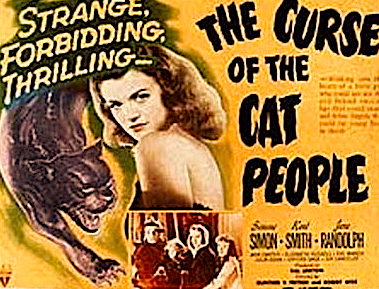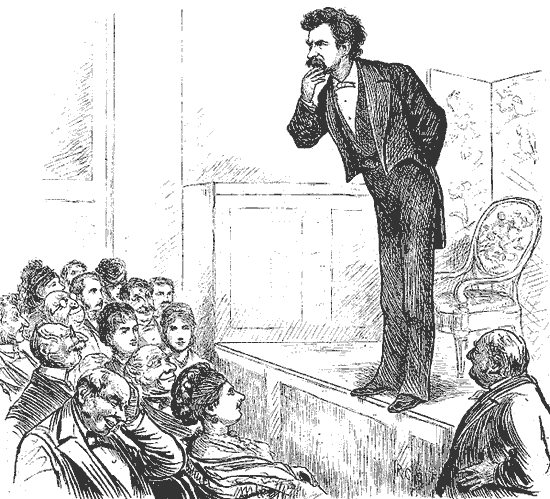
Honestly, there isn’t. Should you feel tension rising within your delicate system over the course of reading this blog post, I invite you to ponder the limpid pool above and calm your frazzled nerves.
The points I’ve been raising throughout this series on character names (and naming) may well have struck some of you as a mite nerve-frazzling. Last time, I went on at some length about the yawn-inducing effect of over-use of major characters’ names in a narrative. As I tried to show, the repetitive force of all those capitals can be somewhat hypnotic, or at any rate distracting from the story itself. It’s worth the novelist’s while, then, to work with the text a little to try to reduce their frequency.
It’s also worth the memoirist’s while, and the creative nonfictionist’s. In fact, it’s likely to behoove pretty much any writer who presents characters in a format other than a list to keep an eye on the percussive repetition of those proper nouns, particularly if the names in question begin with the same first letters or sound similar.
As our friends from last time, Biddy and Libby, may well attest, the reading eye can leap to unwarranted assumptions.
Scarcely had this set of suggestions fallen off my weary fingertips when I sensed a certain amount of disgruntlement in the peanut gallery. Actually, my finely-tuned silent, far-flung reader detector picked up three distinct flavors of chagrin floating around the Author! Author! community, each a fairly common response to being greeted with advice to perform any sort of large-scale surgery on a manuscript. (If there’s a fourth type of stressed-out writer who does not become at least momentarily distraught at the notion of spending the next two months nit-picking his way through the submission he thought would be snapped up by an agent nine months ago, let’s just say I haven’t bumped into him recently on the writers’ conference circuit.)
The first kind is someone I suspect all of you who have spent any time around aspiring writers have met in spades: the oh-it’s-too-much-bother. “But Anne,” I’m quite confident that representatives of this easily-discouraged type exclaimed at yesterday’s suggestion. “Going through my manuscript to check for something as minor as name overuse is going to take WEEKS. I know that you like to set high standards for all of us here in the Author! Author! community, so I suspect you of over-reaching here. Surely, no reasonable agent or editor is going to back off from a good submission for something that minor — I’m just going to hold off and wait until my future agent/editor/reviewers of my bestseller tells me point-blank that over-naming is a problem. In fact, I think I’m going to put off dealing with any revision problem that requires a tool more sophisticated than a simple search-and-replace or spell-check.”
The firm belief that books by new writers get picked up BEFORE they are polished is, while rather charmingly old-fashioned, is one that tends to make those of us who read manuscripts for a living smile sadly and murmur to ourselves, “Oh, this one’s going to have a hard time landing an agent.” Just in case any of you are still harboring illusions on the subject, at this point in literary history — and this was true even before the publishing industry launched into its current let’s-lay-off-a-third-of-our-editors spree — aspiring writers are held 100% responsible for the diagnosis and treatment of their manuscripts’ ills. Millicent the agency screener sees so many technically perfect, beautifully-written submissions that she seldom has qualms about rejecting ones that are close to being so.
Translation: if your manuscript has a slight cough, it’s up to you to provide the cough drops before she sees it.
The trouble is, of course, that the MS with emitting the occasional ladylike “Ahem!” usually received precisely the same prefab rejection letter as the MS infected with an advanced case of whooping cough. As we spent much of January discussing, personalized rejection letters have mostly gone the way of the dodo: we’ve all heard that such creatures once roved the earth, but few of us have ever seen one in person.
The second variety of revision suggestion-induced panic runs to the opposite extreme, plunging aspiring writers into orgies of incessant worry about whether they’ve cleaned up their manuscripts enough prior to submission. Faced with the kind of alarm I raised yesterday, the victim of this type of panic immediately snatches up her editing pens and shouts, “Thanks for telling me, Anne! I’ll clear my schedule for the next three weeks to attend to the matter!”
She is, in a word that I suspect I’m making up on the spot, over-conscientious.
Most of us have probably encountered advanced cases of panic #2: every time a sufferer runs into a new writerly axiom, he rushes to apply it to his work. Adherents of this philosophy would rather spend their time cleaning minute specks of dust off their writing with a toothbrush like an archeologist exhuming the ruins of Troy than run the risk of anything whatsoever being wrong with their work by the time some kind mailman pops it under Millicent’s nose.
In moderation, such devotion to detail is laudable. Over-indulgers, however, can fret themselves into an absolute standstill.
Why? Well, since there’s never any shortage of never-fail writing advice out there, a writer who becomes addicted to dipping his cup into the stream of wisdom too frequently can feel as though he’s trying to drain Lake Titicaca with a teaspoon.
(And yes, in response to what you just thought: the calm water scene above does indeed depict Lake Titicaca — and yes, that was rather a reach to work a mention of it into this post. You think it’s easy to find appropriate images to decorate the blog each day?)
The third type, of course, is the one who exclaims, “Oh, my God — the publishing industry is SO unreasonable! No wonder nothing of value ever gets published! I might as well give up now.” Which is no skin off Millicent’s freckled nose, of course: see my earlier comment about the number of technically perfect manuscripts she sees in any given year, far more than her boss agent could ever hope to sign to representation contracts.
Welcome to the joys of living in a great, big country filled with talented people.
By now, I suspect that I’ve given all three types a common cause upon which they agree absolutely: “Heavens, Anne,” they cry in unison, “if your goal was to depress us into a stupor, you’ve succeeded. Knock off early for the day, will ya?”
Actually, that wasn’t my goal — although, admittedly, it’s one into which I stumble with some frequency whenever I talk here about being realistic about the grim odds that face even an excellent agent-seeking manuscript. My point in bringing up the common stripes of over-reaction to revision suggestions is to encourage all of you to stop yourself from heading toward any of these extremes.
When faced with the prospect of ferreting out and fixing a manuscript megaproblem — something we’re going to be talking about quite a bit in the weeks to come, so brace yourselves — what serves a writer best is to come up with a practical plan of attack. Nothing is better at staving off that feeling of being overwhelmed by complete strangers’ extremely high and sometimes rather arbitrary standards.
Trust me on this one. You’ll have a substantially happier life as a writer if you train yourself not to give in to any of the very natural emotional first reactions.
To give you some practice, let’s talk about a reasonable, effective strategy for diagnosing and treating the problem of over-use of character names.
If you’re in doubt whether you are over-naming, here is a reliable diagnostic test: print up a hard copy of your manuscript, pull out your trusty highlighter pens and mark every time a character’s name appears, one color per character. Highlight up a storm for a chapter or two, then go back and flip through the pages. If a single color appears more than a couple of times on a page, you might want to see where you could trim.
This test will reveal the most about Millicent’s probable reaction if you begin marking on page 1, of course, rather than at some random point within the manuscript. If you can only find time to do a few pages, though, you might not want to start marking there. A good, quick check on your name-usage habits is to highlight a two-person dialogue between major characters.
Why a two-character scene? See if this pattern seems at all familiar:
“I’ve never seen that giant centipede before,” Tyrone lied. “It just crawled into the house, Mom.”
Angela placed her fists upon her ample hips. “I suppose it opened the back door by itself?”
“It certainly has enough legs to do it,” Tyrone said, examining it. “Or it could have crawled through the keyhole.”
“Next you’ll be telling me that the cat is the one who has been opening the kitchen cabinets,” Angela retorted.
“I’ve seen her do it!” Tyrone insisted.
Angela placed her hand upon his head. “Tyrone, I hate to break it to you, but cats don’t have opposable thumbs. Neither do centipedes. So unless you’re harboring a chimpanzee I don’t know about, I’m going to assume that human hands did all these things.”
The boy cast a nervous glance at his closet door; did Mom know about Archie? “If you say so.”
Did you catch the problems here? If you immediately said, “By gum, a skimming reader’s eye might mix up Angela and Archie, since they both start with the letter A, give yourself a gold star for the day. Award yourself three if you also murmured, “This writer is identifying speakers far, far more often than necessary. I wonder if the same pattern persists throughout the manuscript?”
How do we know that this scene doesn’t really require so many tag lines? After the first set of exchanges, there really isn’t any doubt about who is speaking when, is there? So why does the reader need to be reminded so frequently who is who, when the speeches are alternating in a predictable rhythm?
The over-use of tag lines is quite pervasive in submissions, and for good reason: writers often believe that they reduce confusion. But to professional eyes, the author of the example above has apparently invented unnecessary opportunities for repeating her characters’ names. And that’s rather poor marketing strategy at the submission stage because, as I’ve mentioned before, many professional readers consider frequent use of tag lines (he said, she said) as a sign of unpolished writing, so you are going to want to minimize them, anyway.
Be on the lookout, too, for frequent use of relational terms as substitutes for names: her mother, my brother, her boss. Often, writers who lean heavily upon name usage will overuse these, too — and again, physically marking them in the text is generally the best way to bring the perils of frequency home.
To be perfectly frank, until repetitions of these phrases are highlighted in a text, I suspect it’s well-nigh impossible for a non-professional reader to understand fully why this particular type of repetition drives the pros mad. Relationship repetition may seem merely descriptive or innocuous to a casual reader, but it leaves professional readers apoplectic; they read it as the writer’s insecurity about the reader’s caring enough — or not being smart enough — to remember how these people are related.
Speaking of over-reactions: “Criminy,” Millicent has been known to mutter. “Is there a REASON you feel the need to tell me three times per page that Roger is Yvette’s son?”
This may sound funny — “C’mon,” I hear some of you saying, “who is really so insecure about his own intelligence that he worries if a manuscript is calling him dim-witted?” — but I assure you, I’m dead serious about this. As I can tell you from long, hard personal experience, there is nothing like reading a thousand manuscripts in a row for developing literary pet peeves.
Yet in the case of this particular pet peeve, I think Millicent has some justification for feeling that the author is talking down to the reader. Unless you are writing a story that will be published in serial form, as so many of Dickens’ works were, it’s not necessary, and can be downright annoying, to keep referring to a character by her relationship to the protagonist.
Especially when, as often happens, the reader is presented with the relationship from a number of different perspectives. As in:
Brenda looked up at her mother. “Are you sure he’s dead? Couldn’t it be another false alarm?”
Mona cradled her husband’s blue-tinted face in her wrinkled but bejeweled hands. “You’re thinking of my last husband, Martin, the swimmer. Bert’s not capable of holding his breath this long.”
“I didn’t say he was faking it.” Brenda lifted her stepfather’s lifeless arm, dropped it. “I’m just saying that there’s a big difference between comatose and dead.”
“Fine.” Mona kicked her purse at her daughter. “Root through there until you find my compact, and hold the mirror under his nose. If he’s alive, it’ll fog up.”
“For heavens sake!” Millicent will be crying by this point in the manuscript, startling fellow screeners in adjacent cubicles. “If Mona is the mother, OF COURSE Brenda is the daughter! What do you think, I’m an idiot?”
No heckling from the peanut gallery on that last point, please. Millie honestly does have a point here.
Generally speaking, the formal relationship between two characters, particularly if one of those characters is the protagonist, needs to be mentioned to the reader only once in a chapter. If it’s a significant relationship, it may well need to be brought up only once in the book, unless there honestly are issues of mistaken identity involved.
Otherwise, try giving the reminders a bit of a rest.
While you have your marking pens out, it’s not a bad idea to check your submission pages for other instances of phrase repetition as well. I’m not talking about pet phrases here — come on, admit it: every writer has a few phrases and words he likes enough to reuse with some frequency — but overworked nouns and descriptive phrases. Those have a nasty habit of offending the professional eye, too.
You’d be surprised at how much the repetition of even a single verb in two consecutive sentences, for instance, can make a manuscript seem less interesting. Especially — and this is almost impossible to catch when editing on screen, but genuinely irksome to see on a printed page — if the same word or phrase begins or ends two or more sentences in a row.
If you are clever and professional-minded enough to read your manuscript in hard copy and out loud (gee, where have I heard THAT advice before?), it will immediately become clear why: it reads as though the point of the paragraph is to get through the information within it as quickly as possible, rather than to write about it as beautifully as possible.
And in a race run amongst the stylish, my friends, even a couple of lines that fall down on the job can cost you a head start. You’re in this to express yourself marvelously: try to be consistent about it.
And, of course, keep up the good work!

